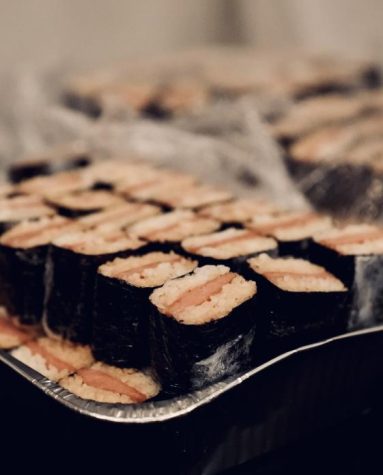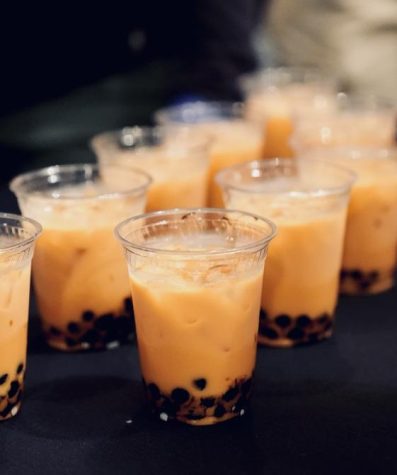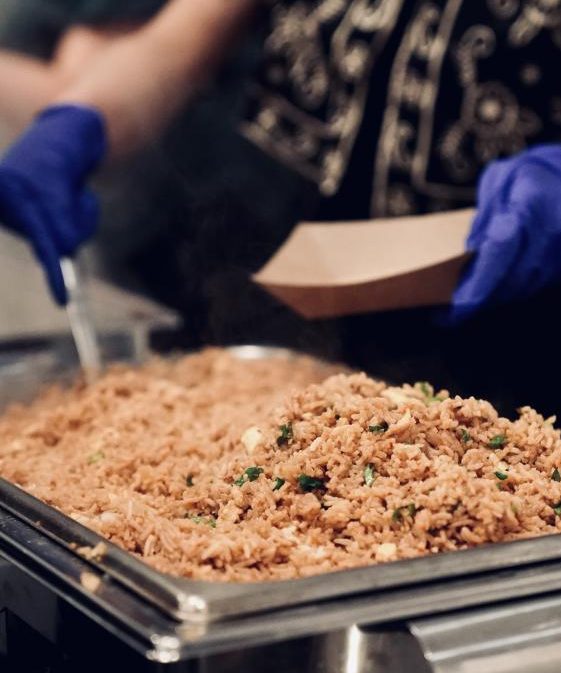Written by: Gabriella Thurber
Photos by Santi Kraft
The comforting views of home look a little different from nine thousand miles away. Every year, hundreds of thousands of international students come to America to pursue higher education. It’s an investment that distances them from the culture and customs they find familiar, challenging them to accommodate new traditions and everyday ways of life. We’ve heard that there’s “no place like home,” so there’s nothing quite like being uprooted and transplanted into a culture an ocean away.
Joceline Lie, a freshman at Biola University, encountered this inevitable disorientation when she started university in America last fall. Lie transitioned from Jakarta, the massive capital city of Indonesia, to the suburban region of La Mirada, California. The two areas exist on vastly differing scales, but for Joceline, there was one thing in particular that made her miss home: food. For her, cross-cultural disorientation was felt most deeply by how Jakarta’s encapsulation of seemingly insignificant elements of cuisine like spices, herbs, and seasonings varied so substantially from the little corner of the world that she had to adapt to.
“As much as I like trying different cuisines, not having a familiar taste was pretty challenging,” Lie said. “The food back home has more seasonings … Indonesia is known for the variety of herbs and spices it has.”
 While her transition to America was smoothed by upperclassmen who helped her adapt to this new experience, there was still an extent to which Lie experienced mild homesickness. Her most comforting memories were those pertaining to family and food, specifically found in the nostalgic familiarity of recipes and meals that reflected her culture. Lie has Chinese ancestry in addition to her family’s Indonesian heritage, and a traditional recipe of theirs to prepare is kue nastar, a customary dish made in celebration of the Chinese New Year.
While her transition to America was smoothed by upperclassmen who helped her adapt to this new experience, there was still an extent to which Lie experienced mild homesickness. Her most comforting memories were those pertaining to family and food, specifically found in the nostalgic familiarity of recipes and meals that reflected her culture. Lie has Chinese ancestry in addition to her family’s Indonesian heritage, and a traditional recipe of theirs to prepare is kue nastar, a customary dish made in celebration of the Chinese New Year.
“It’s an Indonesian pineapple cake …filled with pineapple jam,” Lie said. “My grandma’s recipe would also include chocolate sprinkles on top of them and look more like a sandwich instead of a ball. After baking them, we would also put them in a plastic jar to divide them among ourselves and the guests of the celebration.”
This tradition wasn’t just meaningful because it involved the consumption of food – rather, it was the preparation of it that proved the most memorable. It became a fun childhood memory for Lie to look back on, an experience representative of her family and culture as a whole as each dish depicted an element of her heritage.
In California, Lie did find a way to remain immersed in both cultural cuisine and community, finding some go-to recipes conducive to her college lifestyle. Some of her favorite recipes are quick hacks, instant packets of Indonesian food including rendang, soto ayam, and instant noodles. Lie described food as a bonding tradition in her culture, an opportunity to bring people together and something she has found so important in her time so far at Biola.
Jacky Hu, a freshman at Biola, reiterated this idea. Originating from Wenzhou, China, Hu has developed a passion for cooking traditional recipes even while abroad. Food is an intentional facet of communication, and for Hu, it is his way of reconnecting with his homeland. Wenzhou, located on the southeast coast of China, contains a rich cultural heritage that similarly distinguishes it from America.
“When I can recreate hometown delicacies in the United States, it gives me a sense of peace, as if I have never left my hometown,” Hu said.
A recipe meaningful to Hu is qingtuan, a dish served in commemoration of his ancestors.

Describing it as a traditional speciality snack, Hu says, “We go to the mountains to pick fresh mugwort of the season, then mix the mugwort juice into glutinous rice flour, wrap it with red bean paste, lotus seed paste, or sesame, and finally steam it. It tastes sweet but not greasy, with a light and long-lasting fragrance.”
Like Joceline, the specialty dishes enjoyed by Hu often revolve around traditional holidays observed by his family.
In Winter, as he celebrates the Chinese New Year, Hu and his family make dumplings. They buy pork, corn, and other assorted vegetables, chopping them finely and using dumpling skin to wrap the fillings.
In reflection of this, Hu says, “I believe the best dumplings in the world are the ones we make ourselves. Because it’s not just a food, it also reminds us of the time, energy, and the feeling of being together.”
At Biola, Hu has found that what makes him happiest is, in a sense, recreating this experience. He made dumplings with his friends this past winter, a successful process that met cultural nostalgia with intercultural exposure. Despite being miles away from the geographic actuality of his culture, Hu is able to experience it every day through his cooking. Food is his way of socializing, allowing him to curate intentional interactions with his friends in the day-to-day of college living.
“This isn’t just about the transformation of raw ingredients into cooked meals.” Hu explains, “It represents the place where I grew up, the culture I carry, and the values I’m willing to invest considerable time and effort into pursuing.”
Even an ocean away, both Lie and Hu brought the comfort and solidarity of their traditions and customs into their daily lives in America. Food, a cultural fixture, allows for community to be felt no matter the distance from home.



